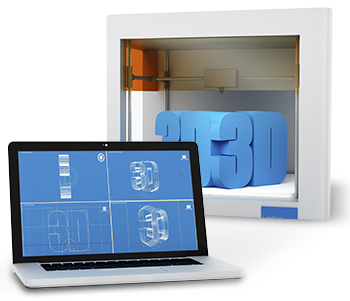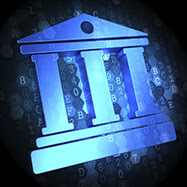Now that home values are on the rise once more, it makes sense to review the tax benefits of home ownership. Also included this month are simple ideas to save money, a summary of an IRS announcement regarding direct deposit of refunds, and an overview of an interesting 3D printing phenomenon that may impact all of us in the next few years.
As always, should you know of someone who may benefit from this information please feel free to forward this newsletter to them.
|
Tax Benefits of Home Ownership
When it comes to tax savings it really is home sweet home. Here are some of the popular tax benefits of owning your own home and how to get the most out of your home's tax advantaged status.
Should you have any questions regarding your situation please feel free to call.
|
The 3D Printing Phenomenon
Just as nobody could have predicted the impact of the steam engine in 1750 - or the printing press in 1450, or the transistor in 1950 - it is impossible to foresee the long-term impact of 3D printing. But the technology is coming, and it is likely to disrupt every field it touches.
The Economist, February 2011
 While 3D printing has been around for a number of years, just recently it has started to make inroads into mainstream America. So what is 3D printing and why should you care?
What is it?
3D printing (also known as Additive Manufacturing) is the process of producing a three dimensional object of various shapes from digital program input. The process reads the design instructions and then lays down successive layers of material to produce the object. The material creating the object could be plastics, metals and many other source materials.
What's the big deal?
The 3D printing industry is now a multi-billion dollar category. If it is fully adopted, it could change many manufacturing processes from mass production to individualized manufacturing. Here are some applications currently being used.
 | Part replacement. Need a missing or broken part? Instead of large inventories at far away locations, the part could be made to order locally using a 3D printer. |
 | Medical applications. Dentists use this to create personalized material for their patients. Limb replacement companies also use the technology to build better fitting products. |
 | Scientific applications. From scientists making fossil replicas to creating sandstone coral structures to help coral colonies prosper, the application of the technology by scientists is expanding every day. Even space exploration becomes easier if you can manufacture a broken replacement part on location. |
 | Endless ideas abound. Want a custom smart phone case? Perhaps you need a replacement part or your student needs a shape for a school project. With open source files from places like Thingiverse and 3D Warehouse, you have instant access to many great ideas. |
Why Care?
 | Price. The cost to own your own 3D printer is now within reach of most households. What once cost $10,000 - 20,000 now can be owned for less than $1,000. |
 | Open Source. There are groups dedicating themselves to making sure the digital plans to create objects stay in public domain. The more digital models available for everyone, the more likely you may find a use for one. |
 | Personal Products. Want to make personal trophies for the soccer team? No problem. Don't have a digital plan to replace that broken part? No problem, just add a digital scanner and you can create the digital plan to output the part to your 3D printer. |
 | Small Business Applications. If you have an idea and you wish to create a prototype, it now is very easy to do. Simply create a model, digitally scan it and then output it to your 3D printer. |
Is it all good?
While the buzz around 3D printing is getting louder, there are those that wonder if the 3D phenomenon is a good thing.
 | A recent open source digital file was made available to create a working hand gun. Authorities quickly moved to try to make the plans inaccessible. |
 | Many firms are trying to corner the intellectual property rights to digital files limiting the availability of 3D designs to produce items of interest. |
 | Other manufacturing processes using lasers also show promise versus the 3D printer "additive manufacturing" approach. |
While there are many doubters, if 3D technology catches on it could become a mass-market household product that enables consumers to save money by creating versus purchasing household items.
|
In the News. IRS Limits Direct Deposit of Refunds
 Beginning in January 2015, the IRS will be limiting the number of direct deposits into a single account to three transactions. This includes all bank accounts (savings and checking accounts) and any pre-loaded or pre-paid debit and credit card accounts. Any requests beyond three will automatically be converted to a paper refund check and mailed to the taxpayer. Beginning in January 2015, the IRS will be limiting the number of direct deposits into a single account to three transactions. This includes all bank accounts (savings and checking accounts) and any pre-loaded or pre-paid debit and credit card accounts. Any requests beyond three will automatically be converted to a paper refund check and mailed to the taxpayer.
The purpose of this change is to reduce the problem of taxpayers having their refunds stolen by criminals. Taxpayers who file multiple tax returns for different family members and have the refunds all deposited in a single account may be impacted by this new policy. In addition, this new direct deposit limit stops the practice of having filing fees directly paid out of a refund amount.
As an additional form of security, the IRS reminds us that direct deposits must be made to an account bearing the taxpayer's name. |
|
|
Seven Little Money Savings Ideas
Money savings ideas are around us every day. Here are seven that can quickly be put to use to save more of what you earn.
 | Play the waiting game. When you want to make a purchase, force yourself to wait before you buy it. If online, leave the site and come back in an hour. For large purchases wait a month. You might surprise yourself how many of these impulsive purchase decisions do not occur when using this technique. |
 | Reduce spending as entertainment. Too often the mall becomes a place to burn a few hours with family and friends. This form of entertainment can be a costly one. Find another entertainment outlet. Go for a walk. Review your community bulletins for free events. When going out to eat, do not choose a restaurant attached to a mall. |
 | Pay yourself first. When sitting down to pay your bills, pay yourself first. Put the payment in the mail to a bank account that is inconvenient to make withdrawals. Use this account to build up three to nine months of spending needs. This will become your emergency fund. |
|  |
 | Prioritize your debt repayment. First pay those items that have a strong legal obligation (like your tax bill). Then pay high interest credit card debt. Be very deliberate about the order in which you pay or make extra payments on your outstanding debt. |
 | Review annuity payments. Many suppliers rely on the strategy to charge you a little bit each month. Some suppliers actually thrive on charging for add-on services. Review your monthly bills and eliminate items you don't need. Typical vendors include cell phone providers, cable companies, internet providers, and traditional phone companies. Add on fees could be call forwarding, or excess charges for data plans, or monthly fees for premium cable channels. Every monthly bill you eliminate comes back as savings every month of the year. |
 | Ask for less. Whenever possible ask for a lower bill amount. Call your credit card company or bank to challenge their fees. Be willing to leave them if they do not. Negotiate for lower pricing on all your large purchases. Use the internet to comparison shop for the same item. While negotiating for a lower price is difficult, you will be surprised how many vendors will say, "yes, I can give you the item for less." |
 | Plan large purchases like your parents. In the old days our parents would save their money and then purchase an item. With today's ready access to credit cards, this great savings habit has become somewhat of a lost art. Why not rediscover this habit by identifying something you wish to buy and then saving your money to make the purchase when you have the cash to pay for it. |
|
As always, should you have any questions or concerns regarding your situation please feel free to call.
|
No comments:
Post a Comment